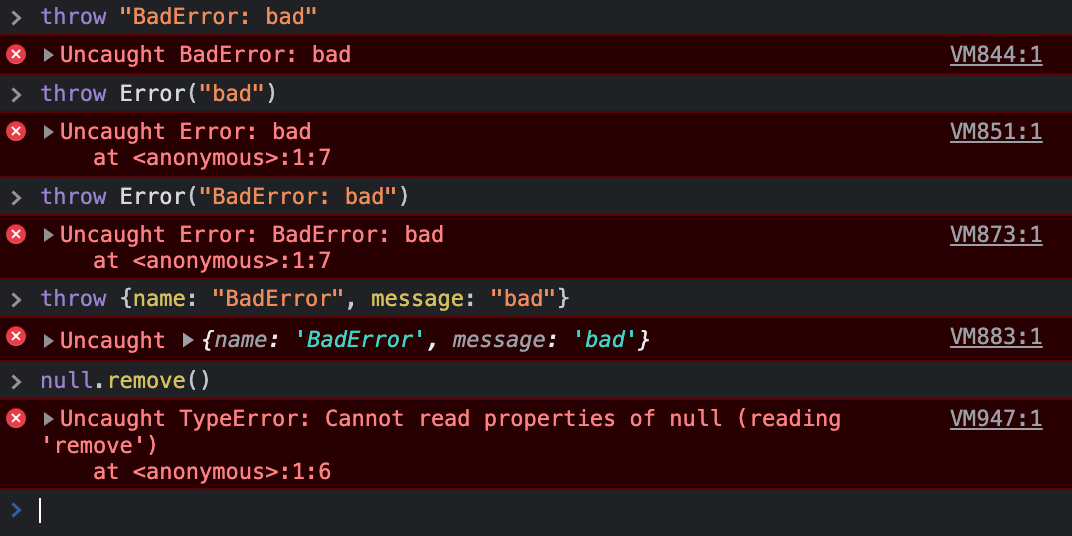I used the Constructor Pattern to create the new error object. I defined the prototype chain such as an Error instance. See the MDN Error constructor reference.
You can check this snippet on this gist.
IMPLEMENTATION
// Creates user-defined exceptions
var CustomError = (function() {
'use strict';
//constructor
function CustomError() {
//enforces 'new' instance
if (!(this instanceof CustomError)) {
return new CustomError(arguments);
}
var error,
//handles the arguments object when is passed by enforcing a 'new' instance
args = Array.apply(null, typeof arguments[0] === 'object' ? arguments[0] : arguments),
message = args.shift() || 'An exception has occurred';
//builds the message with multiple arguments
if (~message.indexOf('}')) {
args.forEach(function(arg, i) {
message = message.replace(RegExp('\\{' + i + '}', 'g'), arg);
});
}
//gets the exception stack
error = new Error(message);
//access to CustomError.prototype.name
error.name = this.name;
//set the properties of the instance
//in order to resemble an Error instance
Object.defineProperties(this, {
stack: {
enumerable: false,
get: function() { return error.stack; }
},
message: {
enumerable: false,
value: message
}
});
}
// Creates the prototype and prevents the direct reference to Error.prototype;
// Not used new Error() here because an exception would be raised here,
// but we need to raise the exception when CustomError instance is created.
CustomError.prototype = Object.create(Error.prototype, {
//fixes the link to the constructor (ES5)
constructor: setDescriptor(CustomError),
name: setDescriptor('JSU Error')
});
function setDescriptor(value) {
return {
configurable: false,
enumerable: false,
writable: false,
value: value
};
}
//returns the constructor
return CustomError;
}());
USAGE
The CustomError constructor can receive many arguments to build the message, e.g.
var err1 = new CustomError("The url of file is required"),
err2 = new CustomError("Invalid Date: {0}", +"date"),
err3 = new CustomError("The length must be greater than {0}", 4),
err4 = new CustomError("Properties .{0} and .{1} don't exist", "p1", "p2");
throw err4;
And this is how the custom error looks:
![Custom error prototype chain]()


